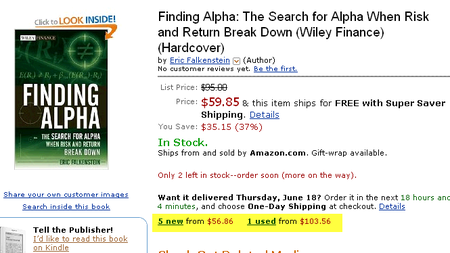Blackberry Tour 9630 comes to Sprint. 2009 July 20 according to SprintGurus ? 2009 July 12 ?
Specsheet/Userguide on Scribd.
Announced for Summer of 2009.
The Facebook phone ?
The BlackBerry Tour smartphone is a powerful mobility tool that operates on Sprint's nationwide 3G (EV-DO Rev. A) network domestically. It also roams on other high-speed wireless networks around the world for reliable voice and email communication without missing a beat.
The BlackBerry Tour is a sophisticated smartphone that enables customers to be more productive and better equipped to manage both their busy personal and business lives. It is ideally suited for those who want to stay socially connected, and lets you share moments through pictures and videos via MMS and instant message on popular IM services or BlackBerry® Messenger. It also offers easy access to your favorite social networking sites like Flickr®, MySpace and Facebook®, and you get smooth integration between the BlackBerry Tour smartphone and your Facebook events and friends giving you a great view of what's happening both personally and professionally. This is the most powerful business smartphone in Sprint's line-up with instant access to emails, calendar, contacts, robust business applications and location-based services, leveraging the best performing networks both domestically and abroad.
Reviewed by Bonnie Cha (CNET): video and text.
Compare to BlackBerry 8703e from 2006.
Previously: Sprint Bold Niagara Tour 9630 BlackBerry introduced.
Blackberry Tour 9630 specs.
OVERLAND PARK, Kan.--(BUSINESS WIRE)--With the new BlackBerry® Tour™ smartphone from Research In Motion (RIM) (Nasdaq: RIMM; TSX: RIM) available from Sprint (NYSE: S) on America's most dependable 3G network1, staying connected won't be a worry domestically, or when you travel around the world.
The BlackBerry Tour smartphone is a powerful mobility tool that operates on Sprint's nationwide 3G (EV-DO Rev. A) network domestically. It also roams on other high-speed wireless networks around the world for reliable voice and email communication without missing a beat.
The BlackBerry Tour is a sophisticated smartphone that enables customers to be more productive and better equipped to manage both their busy personal and business lives. It is ideally suited for those who want to stay socially connected, and lets you share moments through pictures and videos via MMS and instant message on popular IM services or BlackBerry® Messenger. It also offers easy access to your favorite social networking sites like Flickr®, MySpace and Facebook®, and you get smooth integration between the BlackBerry Tour smartphone and your Facebook events and friends giving you a great view of what's happening both personally and professionally. This is the most powerful business smartphone in Sprint's line-up with instant access to emails, calendar, contacts, robust business applications and location-based services, leveraging the best performing networks both domestically and abroad.
"The BlackBerry Tour is a sophisticated and powerful smartphone that will enable customers to be more productive and better equipped to manage their busy business and personal lives; and global travelers can rest easy knowing Sprint has a solution to keep people connected wherever their travels may take them," said Kevin Packingham, senior vice president - Product Development, Sprint. "Particularly compelling for world travelers will be the performance enabled by combining the new feature-rich BlackBerry Tour with Sprint's 3G network and some of the world's other most robust voice and data networks."
No one has a larger voice calling area than Sprint. The Nationwide Sprint Network (inclusive of roaming) reaches more than 304 million people in the United States, Puerto Rico and the U.S. Virgin Islands, with a Sprint calling plan that includes roaming. Additionally, the Sprint 3G Network, the nation's most dependable 3G network, is faster in more places than AT&T's 3G network2, and Sprint has more than 20 times the coverage of T-Mobile's current 3G network, based on square miles.
The BlackBerry Tour smartphone comes with a vibrant high-resolution display (480 x 360 at 245 ppi) plus intuitive trackball navigation, a large, full-QWERTY keyboard, corporate and personal email with attachment viewing, calendar, integrated address book and up to 16 GB of expandable memory with a microSD/SDHC card.
It also includes a 3.2 MP camera with variable zoom, auto focus, flash and image stabilization able to capture crisp pictures and video. It comes pre-loaded with the Sprint Music Store, Sprint TV®, Sprint NFL Mobile Live and NASCAR Sprint Cup Mobile, and features an advanced media player for playing video and music files, plus a 3.5 mm stereo headset jack and support for the Bluetooth® stereo headsets (A2DP/AVCRP). The BlackBerry Tour smartphone also has built-in GPS and supports location-based services.




